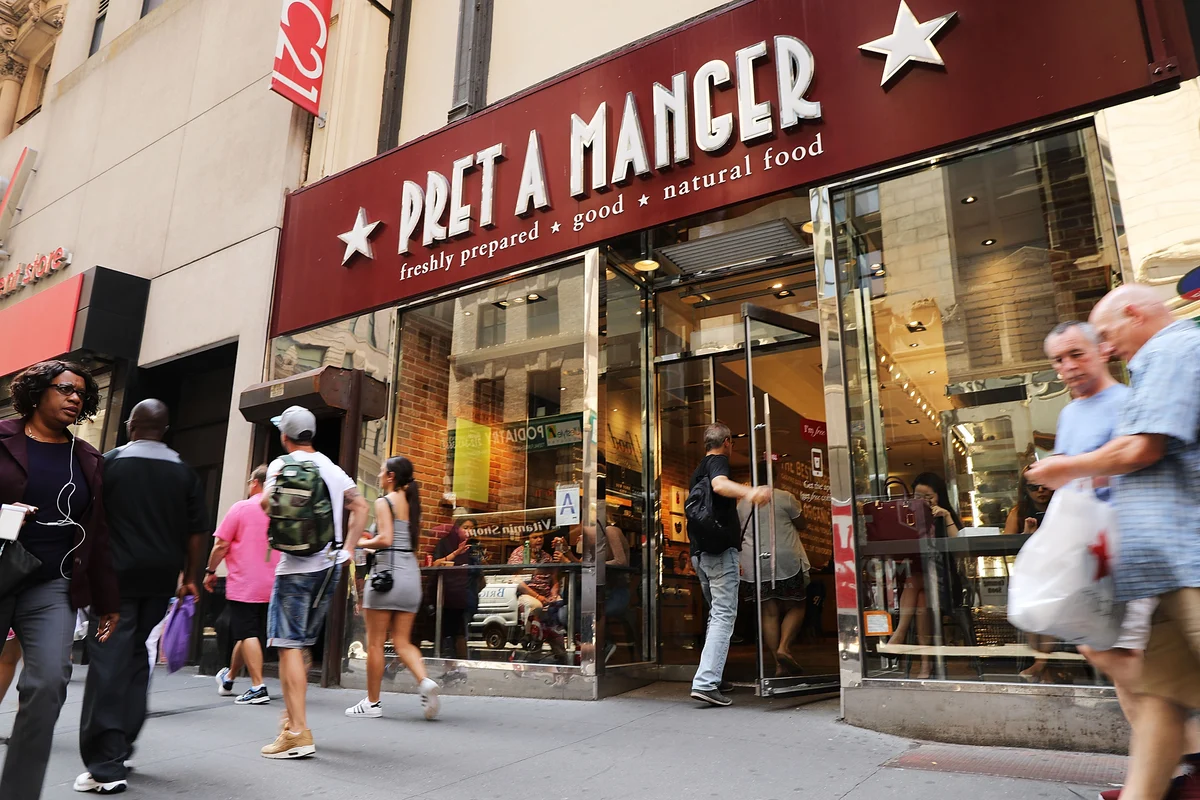By Jonathan Prynn
Copyright standard

It is the fight-to-the-death battle of the meal deals that could help decide the fate of London’s best known sandwich chain. Last week, Pret A Manger, the ubiquitous office-worker pit stop with nearly 300 branches around the capital, bowed to the inevitable. More than a quarter of a century after Boots pioneered the meal deal in 1999, Pret has finally followed suit by starting to offer the sandwich-plus-drink-plus-crisps lunchtime package that has proved so successful for the likes of Tesco and Marks & Spencer. Astonishingly, more than seven million meal deals are sold daily around the UK.
Pret’s Canada Square branch in Canary Wharf was doing a brisk trade at lunchtime on day one of the meal deal trial. Office workers could snap up a chicken Caesar and bacon baguette, a packet of popcorn and a bottle of sparkling water for “Pret Deal” price of £7 — a £2.49 saving on buying the same items separately.
The meal deal will initially be trialled at around 70 Pret branches before the company decides whether to roll it out across more of its 500 UK locations in January. A similar promotion launched in the much smaller market of France in January did “fantastically well”, according to Pret’s CEO, Pano Christou.
It is the latest bid by the 39-year-old company to throw off its unwelcome and damaging reputation as an expensive place to refuel, which has dogged the brand since the start of the cost-of-living squeeze.
Earlier this year, for example, it launched a range of “super plates” salads, costing up to £12.95, double the price of some of those at M&S, although Pret insisted they were far bigger than their rival’s offering. While Pret’s meal deal will undoubtedly make it a more affordable place to pick up lunch, its prices will still be significantly undercut by its biggest rivals. Last month Tesco put up the price of its meal deal by 25p, but that still left it at £3.85 for Clubcard holders or £4.25 for other customers.
Even the Waitrose version, badged as Food to Go, is cheaper than Pret’s at £5 for a sandwich or salad, snack and drink, a price it has held since launch two years ago.
But Pret’s bosses believe that customers will be happy to pay that little bit extra. According to Christou, “Our customers are more price-conscious than ever, and I think that’s pretty well versed across our industry.
“And I think we have a fantastic opportunity with the fresh products we have — we make them in our kitchens day in day out — to have the best quality meal deal on the market.”
The stakes are high and competition is more intense than ever and the business climate is far from helpful.
Earlier this month Pret revealed it made a record £525 million loss last year, having written off a third of the £1.5 billion purchase price paid by current owners JAB Holdings, the investment fund of Germany’s billionaire Reimann family, in 2018.
That deal was, of course, sealed before the pandemic changed commuting habits for ever, curbing the flow of city-centre workers walking past the front doors of its branches.
Pret bosses have tried to dismiss the writedown as “just an accounting term” that is “no reflection on the business, or how the business is doing as we look to the future”.
And while it is true that Pret is trading profitably and sales are growing — up by 10 per cent to £1.2 billion last year — writedowns of this kind, “goodwill impairments” as they are known in the bean-counting trade, are only done for solid reasons.
In Pret’s case it was a recognition of “the currently uncertain global macro-economic environment, the additional bills introduced as a result of the national autumn Budget in 2024”, as well as higher than expected interest rates.
That included the extra £15 million a year Pret will have to shell out following the hike in employer National Insurance contributions that came into force in April.
At the same time, Pret is facing competitor land grabs from all directions — from Greggs at the lower end of the food-on-the-go price spectrum, and the likes of Farmer J and artisan coffee shops at the premium end. Pret’s new meal deal will line up with its other promotions, such as its £5-a-month Club Pret subscription service — in return for up to five half price coffees a day — in a battery of initiatives aimed at drawing more customers through its doors.
Some commentators say the plethora of launches show Pret has still yet to find its formula for success in a post-pandemic world in which central London footfall will never fully recover.
According to hospitality analyst Peter Backman, “Covid really knocked them sideways because people stopped going to the places Pret were based in central London and train stations. But even before the pandemic they were trying too many new things, there was almost a new initiative every week and that sucks the effort out of the team and begins to confuse customers as well.
“Pret has very good DNA but it is finding it hard to move ahead in this post-Covid world where there might be a Greggs, a Nero and a Starbucks as well as a Pret on the four corners of a crossroads.”
But if you thought there are already too many Prets — there are three within a five-minute walk of where I am writing this in the City — think again. Cristou believes there is an opportunity to double or even triple the number of branches in the UK to as many as 1,500 locations. There is also increasing focus on expansion in the US, a market where it has flourished, particularly in New York. There will be five sites at JFK airport alone. But it is in the UK — and to a large extent in London — where Pret’s success or otherwise will be determined.
There is much riding on the meal-deal trial. Losing half a billion pounds is never a good look. For a sandwich chain, even the biggest ones, it is a lot of dough.



